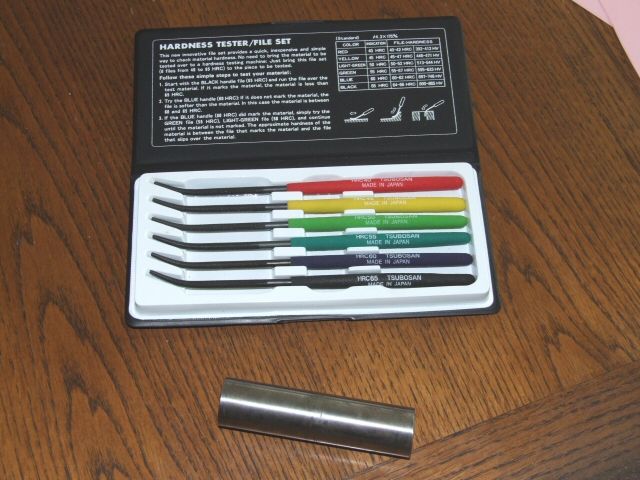Thank you, Roy.
As you indicate, ‘blue steel’ (already heat-treated to the desired hardness, toughness, and ready for further shaping), is sold in small diameters. I seem to recall reading nevertheless, that slightly larger diameters (e.g. <10mm) of pre-toughed steel with very similar elemental content and performance characteristics being available for related use. However, although I can now find no such evidence while eager for a speedy exoneration, I feel sure someone (MichaelG perhaps?) will delve into this.
Having a longstanding preference for silver steel, the difficulty I have with heat-treating steel is escaping from the simple image of carbon atoms ‘drifting’ or ‘racing’ out of solution during quenching. Couple this image with something to do with the placement of carbon in the atomic structure of ‘body-centred cubed’ and its return to ‘face-centred cubed’, nicely disclosed at the ‘just visible’ point of recoalescence*, and you’ll get where I’m coming from. I’m again sure someone will come to my rescue as I bury myself even deeper.
*Only observed in a darkened room just before the red glow of the heated steel (cooling in air), disappears completely.
Admitting to occasionally confusing pivots with pinions through paying less attention, apart from its surface finish/quality (and any ability to improve same) the idea of tungsten carbide for pivots makes sense.
This latter variation may tend to aggravate the desires of professional clock repairers (and others), should the carbide pivot break in situ. Would they have to drill from the back or replace the whole item?
Some professional clock repairers also dislike the use of glue of which I’m guilty. At the time of need, Araldite was so convenient and, I imagine, so is Loctite.
Minimising friction/corrosion beyond that of steel, the availability of ceramic ball bearings offers a good alternative.
Sam
From a very chilly Melbourne
lfoggy.





